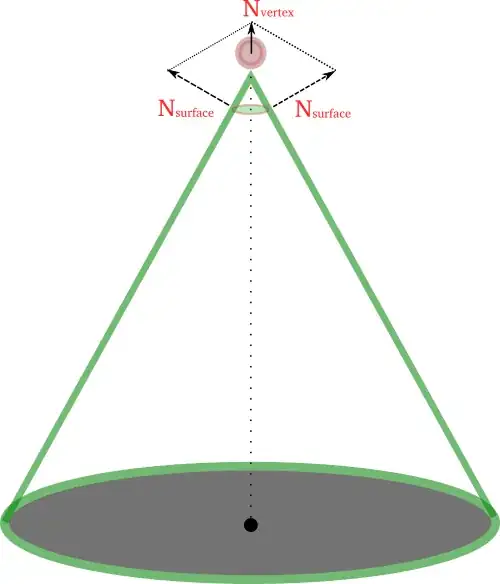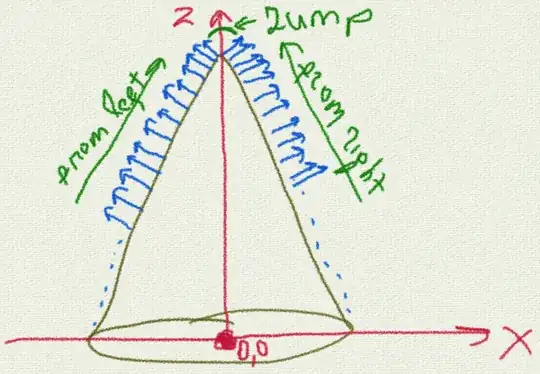By reading Norton dome "proof" about non-determinism of Newton laws, i've started to think about how much Norton system is physical at all. Let's push it to the limits. Let's say we have vertical cone and a particle sitting exactly on cone apex :
Usually normal force is defined as normal vector perpendicular to surface where body is placed. However, here body-particle is placed not on surface at all, but just at cone apex, meaning that it's just a singular point. So, surface normal will not help here. Best bet is to calculate vertex normal which can be defined as averaging all surface normals at some cone cross-section :
$$ \hat{\textbf{n}}_{vertex} = \frac{\sum_{i}{\vec{N}_{surface_{_i}}}}{||\sum_{i}{\vec{N}_{surface_{_i}}}||} $$
So we have got a unit vertex normal vector. This is perfectly valid in mathematical sense and used a lot in computer graphics too. But, the question is - Is it physically meaningful to use vertex normal here as a unit normal force vector (substitute for SURFACE normal force) ?

